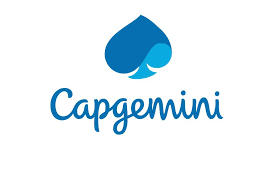Embedded Systems - Introduction to Microprocessors - MSP430
Hand-on Introduction to Embedded Systems, Microprocessors Adventure with MSP430.

Lectures -35
Resources -1
Duration -4 hours

30-days Money-Back Guarantee
Get your team access to 10000+ top Tutorials Point courses anytime, anywhere.
Course Description
Welcome to the "Introduction to Microprocessors-MSP430" course! This course is designed to provide students with a comprehensive understanding of microprocessor and microcontroller systems, with a focus on programming the MSP430 microcontroller.
Throughout the course, students will learn about the fundamentals of microprocessor architecture, memory organization, and input/output (I/O) interfaces. They will also learn how to program the MSP430 microcontroller using the C programming language, and how to use development tools such as the MSP430 LaunchPad development board and Code Composer Studio Integrated Development Environment (IDE).
The course will cover a range of topics, including:
- MSP430 architecture and memory organization
- Input/output interfaces and programming
- MSP430 programming using Code Composer Studio IDE
- Interrupt handling and timer modules
- Analog-to-digital and digital-to-analog conversion
- Serial communication protocols (e.g. I2C, SPI, UART)
- Interfacing MSP430 with sensors and actuators
In addition to theoretical concepts, the course will also include hands-on exercises and projects, allowing students to apply their knowledge in practice. By the end of the course, students will have gained a strong foundation in microprocessor and microcontroller systems and will be equipped with the skills to develop applications for embedded systems using the MSP430 microcontroller.
This course is suitable for students pursuing degrees in electrical and computer engineering, computer science, or related fields. It is also ideal for hobbyists and enthusiasts interested in developing applications for embedded systems using the MSP430 microcontroller. Prior programming experience is not required, although a basic understanding of the C programming language would be beneficial.
Enroll now to gain a solid foundation in microprocessor and microcontroller systems and to develop your skills in programming the MSP430 microcontroller!!!
Who this course is for:
- designed for learners who are interested in learning the fundamentals of microprocessor and microcontroller systems.
- This course is particularly suitable for students pursuing degrees in electrical and computer engineering, computer science, or related fields.
- This course is also ideal for hobbyists and enthusiasts who are interested in developing applications for embedded systems using the MSP430 microcontroller.
- This course is designed for learners who are eager to learn new concepts and are willing to put in the time and effort required to complete the assignments and projects.
- Overall, this course is intended for learners who are looking to expand their knowledge and skills in microprocessor and microcontroller systems, and who are interested in developing applications for embedded systems using the MSP430 microcontroller.
Goals
Introduction to microprocessors and microcontroller systems
MSP430 architecture and memory organization
Input/output interfaces and programming
MSP430 programming using Code Composer Studio IDE
Interrupt handling and timer modules
Analog-to-digital and digital-to-analog conversion
Interfacing MSP430 with sensors and actuators
Prerequisites
A bit of background on Circuit Analysis
Background on C Programming

Curriculum
Check out the detailed breakdown of what’s inside the course
Microcomputer Organization
35 Lectures
-
Microcomputer Organization 10:43 10:43
-
3.2 MPU vs MCU 10:50 10:50
-
3.3 Programmers and Hardware Model 02:43 02:43
-
3.4 CPU 08:51 08:51
-
3.4.1 Control Unit in CPU 09:00 09:00
-
3.4.2 Arithmetic Logic Unit (ALU) in CPU 05:24 05:24
-
3.4.3 Bus Interface Logic (BIL) in CPU 03:21 03:21
-
3.4.4 Registers in CPU (PC and SPU) 10:36 10:36
-
3.4.4.1 Status Registers 09:24 09:24
-
3.4.4.2 Example of Flags (Flags in Status Register) 06:28 06:28
-
3.4.4.3 Carry Flags 06:52 06:52
-
3.4.4.4 Flags and Number Comparison 07:49 07:49
-
3.5 MSP430 Basic Hardware Intro 07:21 07:21
-
3.6.1 System Busses : Data Bus 04:40 04:40
-
3.6.2 System Busses : Address Bus 04:40 04:40
-
3.6.2 Example of Address Bus 05:58 05:58
-
3.6.3 System Busses : Control Bus 03:41 03:41
-
3.7 Addressing Modes 06:25 06:25
-
3.7.1 Register Mode (Addressing Modes) 05:20 05:20
-
3.7.1.1 Hands on Programming Register Mode (Addressing Modes) 08:54 08:54
-
3.7.2 Indexed Mode (Addressing Modes) 05:04 05:04
-
3.7.2.1 Hands on Programming Indexed Mode (Addressing Modes) 05:50 05:50
-
3.7.3 Indirect Register Mode (Addressing Modes) 06:54 06:54
-
3.7.3.1 Hands on Programming Indirect Register Mode (Addressing Modes) 04:14 04:14
-
3.7.4 Indirect Autoincrement Register Mode (Addressing Modes) 08:51 08:51
-
3.7.4.1 H-O-P Indirect Autoincrement Register Mode (Addressing Modes) 04:24 04:24
-
3.7.5 Immediate Mode (Addressing Mode) (HOP-included) 04:58 04:58
-
3.7.6 Absolute Mode 10:55 10:55
-
3.8 Constant Generators and Emulated Instructions 06:20 06:20
-
3.9 Introduction to Instruction Sets 03:25 03:25
-
3.9.extra - Anatomy of an Instruction 13:17 13:17
-
3.9.1 Movement Instructions (mov.w and mov.b) 06:42 06:42
-
3.9.2 Addition Instructions (add.w, addc.w adc.w) 15:39 15:39
-
3.9.3 Subtraction Instructions (sub.w, subc.w and sbc.w) 15:44 15:44
-
Resources
Instructor Details

xzz
Course Certificate
Use your certificate to make a career change or to advance in your current career.

Our students work
with the Best


































Related Video Courses
View MoreAnnual Membership
Become a valued member of Tutorials Point and enjoy unlimited access to our vast library of top-rated Video Courses
Subscribe now
Online Certifications
Master prominent technologies at full length and become a valued certified professional.
Explore Now



 Updated on Jun, 2024
Updated on Jun, 2024
 Language - English
Language - English